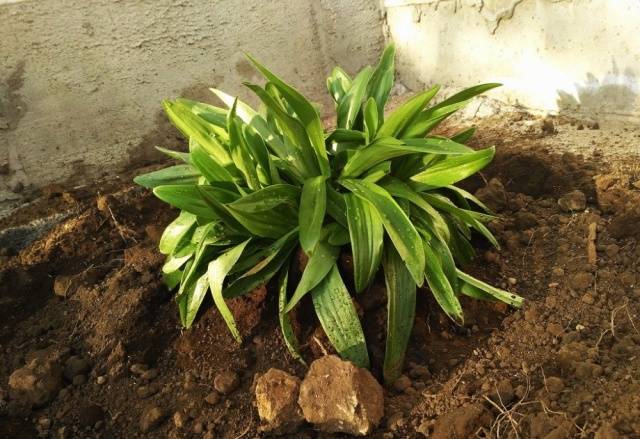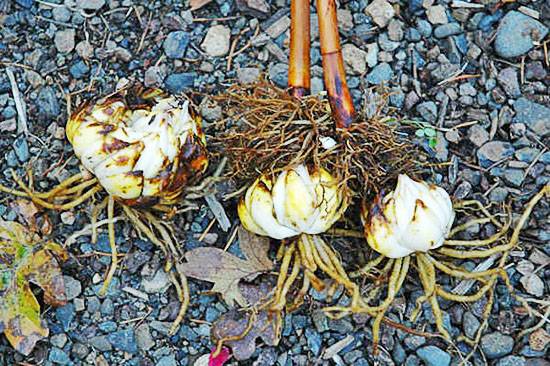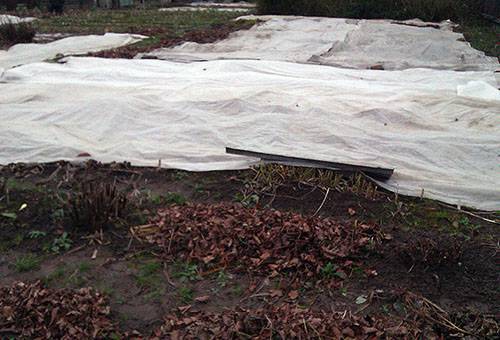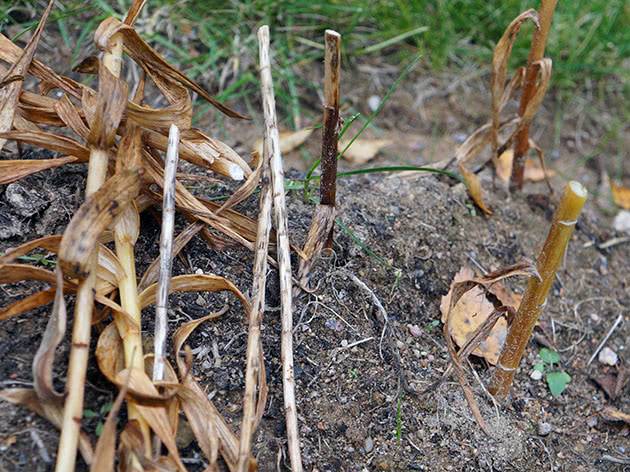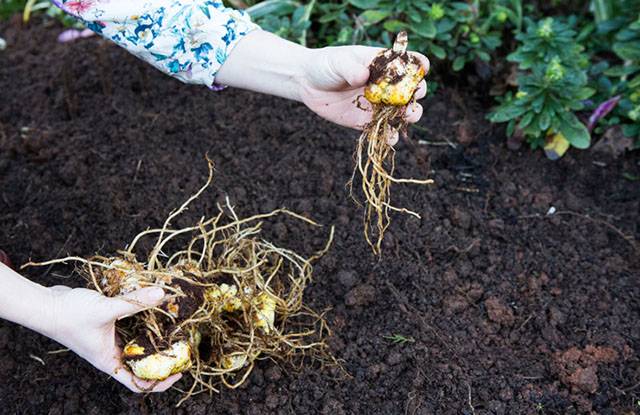Content
Lilies are luxuriously blooming perennials. With their beauty during the flowering period, they are able to outshine even roses. It is this beauty that often scares off beginners in floriculture - it seems to them that caring for such a miracle is associated with incredible difficulties, and, in most cases, they are very mistaken. It is lilies, especially some of its varieties, that practically do not require any care after planting. The main thing is to choose the right place and time. But the variety of lilies is huge - therefore, there are a lot of nuances in growing it - it all depends on the specific variety that you choose. Planting and transplanting lilies in the fall to another place is the topic of this article, which provides answers to the most common questions novice gardeners ask, fearing to do something wrong in caring for a regal beauty - a lily.
Planting lilies in the fall, when and how to plant
Before talking about how to transplant lilies in the fall to another place, you need to discuss the very process of settling these exotic beauties on your site. Planting lily bulbs in the fall in the ground is the most traditional and favorable for most regions of Russia. Only in areas with a harsh climate and early winter (North, Siberia) are lilies planted in flower beds not in autumn, but rather in August.
In fact, planting lilies in spring is also possible and has been popular in recent years. After all, the planting material of these luxurious bulbs is now offered almost all year round, and many impatient gardeners purchase bulbs even in winter. But most lilies bloom in the first half of summer, while they do not tolerate frost well, therefore, when planted in the spring in the ground in most areas, the bulbs will experience stress and developmental delay, and may not bloom at all in the current season.
If you have already become the proud owner of a lily bulb in the winter or early spring period, and want to plant it, as expected, in the fall, then the next option would be the following. Soak it in a cool place until a sprout appears, and then plant it in a peat pot (with a volume of at least 0.5-0.7 liters) with a light soil mixture and grow in the most lighted and moderately warm place, not allowing the temperature to drop below zero. You can use a balcony, loggia, veranda.
In the summer, it will be possible to dig it in the garden in a semi-shady place, and closer to autumn, plant it in a permanent place.
In general, when buying lily bulbs for fall planting in stores or markets, do not take those that have at least small sprouts.
The fact is that these sprouts will quickly grow after planting, and in winter they will most likely die, and the bulb runs the risk of rotting. It is best to take lily planting material in the fall from familiar gardeners who dig up their bushes for transplanting to another place.
When to plant lilies in autumn
Many are interested in when to plant lilies in the fall. The fact is that in bulbs planted in open ground, the root system should have time to grow and get stronger before the onset of stable frosty weather.(And the perennial roots of lilies are able to develop even at low temperatures above zero.) Only in this case, the sprouts that appear in the spring will be able to calmly withstand return spring frosts.
According to the requirements of agricultural technology, the average air temperature during the autumn planting or transplanting of lilies should drop to + 10 ° C and not rise much higher. Since this happens in different ways in different regions, the timing of planting lilies in the fall can vary greatly.
- In the Moscow region and in general in the middle lane, you can start planting (transplanting) flowers in mid-September and carry it out until the beginning - mid-October, depending on weather conditions.
- In the southern regions, the planting dates for lilies in the fall are shifted by a month - mid-October - mid-November.
- In the Urals and in the Leningrad Region, it is better to plant the bulbs already, starting from the end of August and in September.
- And for most regions of Siberia, this procedure is best done in August.
How to plant lilies in the fall
When answering the question: "How to plant lilies in the fall?" you should first pay attention to the choice of location. Indeed, on average, lilies grow well in one place without transplanting up to 4-5 years, and some (curly) even up to 10 years. Absolutely all lilies love well-drained, light soil, therefore, attention must be paid to the preparation of drainage and also the land mixture. If you have heavy clay soils, you need to dilute them with sand. In addition, most lilies develop well in soil with a slightly acidic reaction, but some varieties (Snow-white, Caucasian, Tubular) absolutely need a slightly alkaline earth. For this, chalk or wood ash is added to the soil mixture for planting. If the soil, on the contrary, needs acidification, peat is used.
If the soil on the site is not very fertile, you can use the addition of 100 g of superphosphate per square meter of planting.
It is desirable to place flowers in a sunny and sheltered place from the winds, but many varieties can grow in partial shade, and some even prefer it (Sargent, Hanson, Canadian, Caucasian, Curly, Callous).
It is often asked how exactly to plant lilies in the fall. If you use purchased bulbs, or obtained from an unreliable source, then it would be more prudent to soak them before planting in a 0.2% solution of foundation or Maxim.
For planting, they pull out holes of the required depth at the prepared place, pour 2-3 cm of coarse sand on the bottom, place a lily bulb and cover with the prepared soil mixture, not tamping much.
The next important question is about the planting depth of lily bulbs. It is determined by the size of the bulb itself, and the mechanical composition of the soil in which it is to grow, and even by the type of lily itself. For example, many times the already mentioned snow-white lily must be planted to a depth of no more than 2-4 cm. Similar recommendations should be followed when planting Catsby and terracotta species. For most lilies, especially Asian hybrids, which are capable of forming roots not only on the bottom, but also on the lower part of the stem, you need to choose a planting depth that is two to four times larger than the diameter of the bulbs. Lily bulbs with powerful and tall stems or large peduncles (Hanson, Willmott, Henry, curly) are also planted quite deeply (from 12 to 20 cm or even more).
- Firstly, more moisture is retained at depth and flowers are much more comfortable in hot summers.
- Secondly, the soil at a depth does not freeze longer, which makes it possible for the roots to develop for a longer time.
- Thirdly, many more babies are formed in plants.
- Fourthly, the growth of the peduncle in spring is slower, but spring frosts are practically not afraid of it.
Finally, remember to plant the bulbs deeper on light sandy soils than on heavy loams.
When calculating the distance between the bulbs when planting, you should be guided by ordinary common sense. The closer you plant them, the earlier you will have to plant them. This primarily applies to Asian hybrids. If you know that the flowers of your variety reach 40-50 cm in diameter (which is not surprising for lilies), then closely planted, they will look ugly. On average, the distance between the bulbs is left at 20-30 cm.
Novice gardeners are also often interested in when lilies planted in autumn sprout and bloom. The timing of germination is highly dependent on the region where you planted the lilies. Usually, sprouts appear when there are stable above-zero temperatures in the daytime, and only at night there are frosts. In the south, the first shoots may appear in March-April. In the middle lane (Moscow region), lily shoots usually appear in late April - early May. As a rule, the seedlings of tubular hybrids and Candidium are the very first to appear.
And flowering begins in June in the southern regions. In temperate latitudes, Asian hybrids are the first to bloom in late June - early July.
Do I need to dig lilies for the winter
Lilies have a reputation for being so capricious of flowers that many gardeners, especially beginners, often wonder whether it is necessary to dig up lilies for the winter. In fact, the vast majority of lily varieties, primarily Asian hybrids, most of the natural species, LA and OT hybrids not only do not need to be dug out for the winter, but they do not even need to be covered with anything, at least in the middle lane. ... In Siberia, in regions with severe winters, it is advisable to insulate them with a layer of organic mulch (humus, compost), about 15 cm thick, and then cover them with fallen leaves.
Tubular hybrids are less resistant to frost, but still, in many regions of Siberia, they winter well under shelters. Eastern hybrids are the most exotic representatives of lilies, they are also the most capricious, in the middle lane they can survive under shelters, but already in the regions of the Urals and Siberia it is better not to risk it and dig up the bulbs for the winter.
Thus, whether you need to dig up lilies in the fall or not is up to you - it all depends on the weather conditions in your particular area. In addition, some lilies, for example, oriental hybrids, are no longer afraid of frost, but of damping, so their shelter must be covered with waterproof material on top to protect the bulbs from excessive dampness in the late autumn and early spring periods.
Caring for lilies in the fall, preparing for winter
In the fall, immediately after planting, no care for the lilies is required. If in your region there can be frosts without snow, then it is better to immediately cover the planting site of lilies with spruce branches, and even better with needles, which will prevent slugs from getting to the flowers in spring, and on top with fallen leaves and waterproof material. It is especially important to cover young bulbs in the first year after planting (transplanting).
Subsequently, if you still decide to dig up lilies for winter storage, then, most importantly, do not let them dry out. Sprinkle them with wet sawdust and put them in bags with holes. You need to store packages either in a cool, frost-free cellar, or in the lower compartment of the refrigerator.
Transplanting lilies in the fall
Although lilies can grow in one place for about 4-5 years, over time, many varieties form children, the number of which increases every year. They require free space for life and unwittingly take it away from mother plants, in which the number and size of flowers decreases, and they themselves become shorter in growth. There is only one way out - to plant bushes.
Most Asian hybrids form such a significant number of babies that in some sources it is advised to transplant them even every year. Other species and varieties, on the contrary, practically do not form children or form very few (tubular and oriental hybrids), at least in the middle lane for a very banal reason - they simply do not have enough summer heat. In any case, watch your lily, if, despite feeding and care, its flowering has worsened, then it needs a transplant.
If you have not decided when to transplant lilies in the fall or spring, then think about the fact that during the spring transplant, you will damage the roots of the plants (and they are perennial in lilies), the flowers will appear much later, and the plants will not have time to prepare for winter. for late flowering.
In the summer, after flowering, the bulb gradually begins to prepare for the dormant period, and after a month or two, at the beginning of autumn, the most favorable time comes for transplanting lilies to another place. It is no coincidence that it is during this period that the planting of lily bulbs in a permanent place is also recommended.
But it is better to remove the ovaries or seed pods formed after flowering, unless, of course, you are going to propagate lilies with seeds, which is very troublesome and laborious.
So, you have decided to start transplanting lilies to another place. If their stems have already turned yellow, then before transplanting them, for convenience, you can already cut them off, leaving hemp 10 cm long.If the stems are green, then you do not need to cut them, but you must try to handle the root system as carefully as possible.
You dig in the bush, stepping back about 30 cm from it. The root system of different types of lilies can be very different: in some it is powerful and knocked down into a dense earthen ball, in others the bulbs after digging scatter like potatoes. In any case, carefully separate the large onion from the numerous children and plant them in a new, pre-prepared place. All the rules and recommendations on the distance and planting depth discussed at the beginning of the article apply in the case of a transfer.
If your plants were not sick with anything during the season, then there is no need to subject the roots to additional treatment with fungicides. It is also not worth cutting them off - they are perennial and will continue to grow in a new place. But it is very desirable to free it from rotten or damaged scales or roots, if any.
If, for various reasons, you cannot immediately plant the bulbs in a new location or want to share the planting material with your neighbors, then do not leave the bulbs outdoors, even for a short time. They are able to dry out very quickly, because they do not have a protective shell, like other bulbous ones. Immediately after digging, place them in damp sawdust or moss, in a pinch, wrap them in a damp cloth or newspaper and wrap them in plastic.
Conclusion
Thus, planting and transplanting lilies in the fall to another place is not a particularly difficult process, but it allows you not only to update the planting and appearance of your garden, but also to propagate your favorite flowers.






